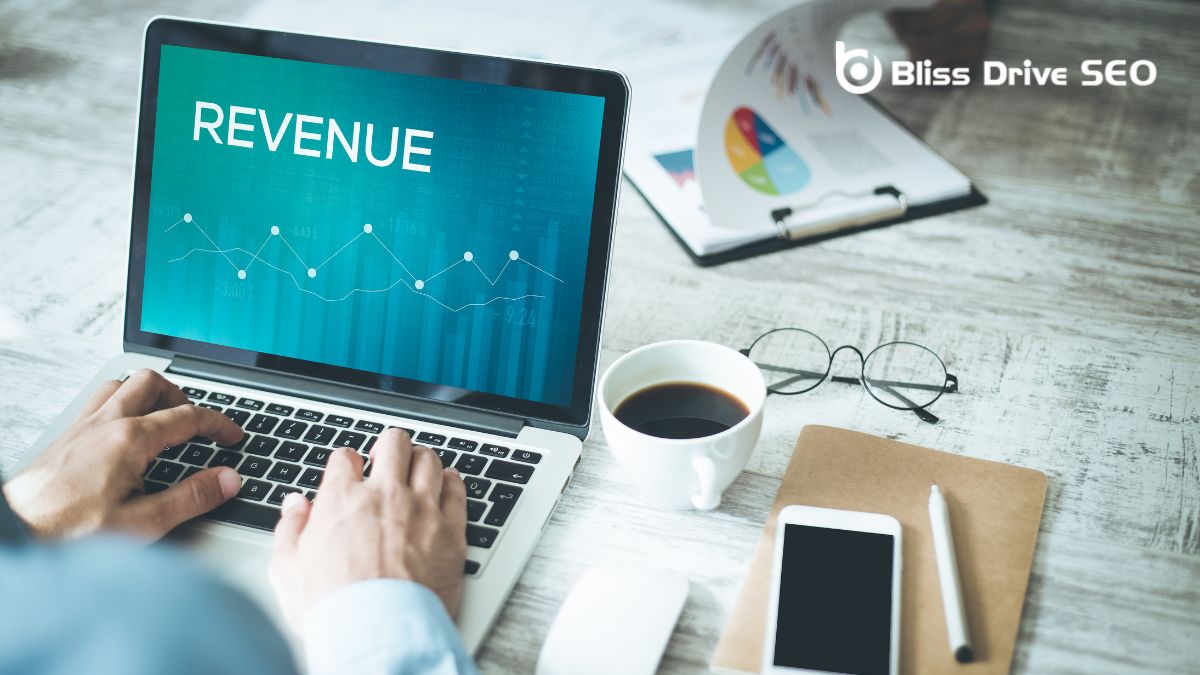Learn More About Us

If you want to boost your website's conversions, improving its usability is key. A well-designed user experience (UX)The overall experience a user has when interacting with a website or application, including usabilit... can make the difference between a visitor bouncing and a visitor converting. Think about it: clear call-to-actions, intuitive navigation, and seamless interactions all contribute to a smoother user journey. When users find what they need without frustration, they're more likely to complete desired actions. But how exactly can you optimize these elements to not only meet but exceed user expectations?

Understanding the significance of UX design can be transformative for your website's success. When you prioritize UX design, you're focusing on enhancing website usability and creating a positive user experience. This approach directly influences your website conversion rateThe percentage of visitors who complete a desired action, such as making a purchase or filling out a... by making it easier and more enjoyable for users to navigate your site.
By incorporating principles from psychology and design, UX design helps you understand your users' needs and feedback. This understanding allows you to improve conversions by tailoring the user journey to be seamless and intuitive.
A good UX design isn't just about aesthetics; it's about creating a structure and flow that makes sense to your users, guiding them effortlessly from one point to another.
Conversion rate optimization (CRO)The systematic process of increasing the percentage of website visitors who take a desired action, s... heavily relies on a solid UX design. When you provide a positive user experience, visitors are more likely to engage with your content, complete desired actions, and ultimately convert.
Good UX design leads to increased brand loyaltyThe tendency of consumers to continue buying the same brand's products or services. and customer satisfaction, which are essential for long-term success.
When diving into the key components of UX design, you'll find that each element plays an important role in creating a seamless user experience. Strategy is the foundation, involving planning features and functionality to meet user needs. By defining a clear strategy, you set the stage for a website that resonates with users, ultimately boosting conversions.
Next is scope, which outlines what's included in the UX design process. Being clear about the scope guarantees that all necessary elements are covered, improving overall website usability.
The structure element organizes the site's information, making it easier for users to navigate and find what they need quickly.
The skeleton element is all about wireframes and low-level visual elements. It's essential to visualize the layout and flow before diving into high-fidelity designs. This step can greatly enhance the user experience by ensuring that the design is both functional and aesthetically pleasing.
Understanding conversion rates starts with calculating them by dividing the number of desired actions by the total number of visitors to your site. To boost these rates, you'll need to evaluate factors like product appeal and target audience. Tracking various metrics alongside conversion rates will give you a fuller picture of your website's performance.
To effectively gauge the success of your website or marketing efforts, calculating conversion rates is a crucial step. The conversion rate is determined by dividing the number of conversions by the total number of visitors to your website. This simple metric reveals how well your site or campaignA set of ad groups sharing a budget, targeting options, and other settings. is performing in getting visitors to take desired actions, such as making a purchase, signing up for a newsletterA regularly distributed email containing news, updates, and content relevant to subscribers., or filling out a form.
To calculate your conversion rate, use the formula: Conversions / Total Visitors. This calculation provides a clear metric for evaluating your website's success.
For example, if you have 50 conversions and 1,000 visitors, your conversion rate is 5%. Tracking this metric helps you understand how effectively your website is engaging visitors and driving revenue.
Monitoring multiple metrics alongside your conversion rate gives you a complete view of your website's performance. This deeper insight allows you to identify areas needing optimization and improve overall engagement.
Understanding and calculating conversion rates enables you to make informed decisions that leadA potential customer referred by an affiliate who has shown interest in the product or service but h... to higher levels of engagement and increased revenue, ultimately enhancing your website's success.
While calculating conversion rates provides a clear metric for your website's success, knowing the factors that influence these rates allows you to make impactful improvements. Your conversion rate measures the percentage of visitors who complete a desired action, like making a purchase or signing up for a newsletter. To boost this rate, you need to focus on several key conversion factors, including website design, user experience (UX), and call-to-action (CTA) placement.
Effective website design is essential. A cluttered site can overwhelm users, while a clean, intuitive design keeps visitors engaged.
The user experience is equally important; a seamless and engaging UX design helps guide users effortlessly through your site, reducing friction and increasing the likelihood of conversions.
The placement and design of CTAs also play a substantial role. Clear, compelling CTAs placed strategically can notably improve your site's conversion rate. Remember, conversion rates can vary across industries, typically ranging from 2% to 5%, but top-performing websites achieve rates of 10% or more.
Tracking conversion metrics is vital for gauging your website's effectiveness and the success of your marketing campaigns. By calculating your conversion rate—dividing the number of conversions by the total visitors—you can assess how well your site turns visitors into customers. Google AnalyticsThe systematic computational analysis of data or statistics to gain insights and support decision-ma... provides powerful tools to help you set up and track conversion goals, like destination goals and event-based goals, allowing you to monitor key metrics easily.
Understanding your conversion rate is pivotal for evaluating website performance. It lets you see what's working and what isn't, guiding you in making data-driven decisions for optimization.
For instance, if you notice low conversion rates, you might need to revisit your user experience design, ensuring it's intuitive and engaging.
Conversion rates can vary greatly depending on factors like product type, target audience, and website design. A high conversion rate for a nicheA specific segment of the market targeted by affiliates to promote products or services. product might differ from one targeting a broader audience.
Regularly tracking these metrics helps you adapt and refine your approach, maximizing your website's potential. With the right data at your fingertips, you can continuously improve and optimize, driving better results and enhancing overall website performance.

To boost conversions, you need to focus on conversion rate optimization by analyzing user behavior and implementing A/B testing strategies.
Pay close attention to how visitors interact with your site and test different elements to see what works best.
Optimizing your call-to-action can greatly enhance user engagementThe level of interaction and involvement users have with social media content. and drive more desired actions.
Diving into user behavior is necessary for mastering Conversion Rate Optimization (CRO). By truly understanding how visitors interact with your site, you can make informed decisions that lead to boosting conversions. Start by using heat mapping to visualize user interactions. Heat maps show where users click, scroll, and hover, highlighting areas of interest and potential bottlenecks in your website design.
Next, journey mapping will be employed to track the user experience from start to finish. This technique helps pinpoint areas needing website design improvement by analyzing each step a visitor takes.
You might discover, for example, that users abandon their carts at a specific stage, indicating a need for a smoother checkout process.
Data-driven insights are your best friend in this endeavor. By analyzing user interactions, you can uncover patterns and trends that inform your CRO strategy.
Are users getting stuck on a particular page? Is there a call to action that's being ignored? These insights are vital for enhancing website usability and ultimately increasing your conversion rates.
A/B testing is a powerful tool that lets you compare two versions of a webpage to see which one drives more conversions. By testing variations like headlines, images, or call-to-action buttons, you can identify which elements impact user behavior the most. This method allows you to make data-driven decisions to optimize your site's conversions, significantly boosting your conversion metrics.
Here's how to effectively implement A/B testing strategies:
A/B testing is an essential part of conversion rate optimization (CRO). When done correctly, it can lead to up to 300% improvement in conversions, making it a significant optimization strategy for continuous website enhancement.
Building on the insights gained from A/B testing, focusing on optimizing call-to-action (CTA) elements can greatly enhance your conversion rates. Start with button designs; testing various colors and placementsSpecific websites or locations within websites where ads can appear. can boost conversions by 21% on average. The key is to make your call-to-action buttons both clear and visible on every page, which can lead to a significant 232% increase in conversion rates.
Next, the language you use matters. Employ action-oriented language like "Get Started" or "Claim Your Free Trial" to improve click-through rates by 161%. This type of wording encourages users to take immediate action, driving engagement.
Incorporating urgency into your CTAs can also be a game-changer. Phrases like "Limited Time Offer" or "Act Now" create a sense of urgency, leading to a potential 226% increase in conversions. This tactic leverages the fear of missing out (FOMO), compelling visitors to act quickly.
Visualizing and understanding the steps a user takes to interact with your website is the essence of customer journey mappingA visual representation of the steps a customer takes to achieve a specific goal, such as making a p.... It's a powerful tool that lets you identify touchpoints and pain points, helping you optimize navigation for a seamless experience. By tailoring your website design to meet user needs, you enhance user satisfaction and drive higher conversions.
Here's how you can effectively implement customer journeyThe complete experience a customer has with a brand, from initial awareness to post-purchase interac... mapping:
To create a user-friendly website, wireframes and prototypes are invaluable tools. Wireframes act as visual guides, laying out your website's structure and layout before diving into the actual design. By planning content placement and navigation flow, you guarantee that users can easily find what they need, enhancing their experience and boosting conversions.
Prototypes take things a step further. They're interactive models that allow you to test user interactions and refine design elements. With prototypes, you can simulate how users will navigate your site, click through various pages, and engage with different features. This hands-on testing is essential for gathering user feedback and making necessary adjustments before the final launch.
Using wireframes and prototypes streamlines the design process. Wireframes help you organize the layout and structure without getting bogged down by design details.
Prototypes, on the other hand, let you focus on user testingObserving real users as they interact with a website to identify usability issues and areas for impr... and refining the design based on real-world interactions. This iterative approach not only saves time but also guarantees that your website is intuitive and user-friendly from the get-go. By incorporating these tools, you're setting your site up for success right from the planning stages.
To build brand loyalty, you need to establish trust through consistent and engaging user experiences. When users find your site easy to navigate and visually appealing, they're more likely to return and recommend it to others. This not only boosts conversions but also fosters long-term customer relationships.
A website's consistent brandingThe process of creating a unique name, design, and image for a product or service in the consumer's ... can make or break users' trust and credibility. When you maintain a cohesive visual identityThe visual elements of a brand, including logo, typography, colors, and design elements. and consistent messaging across all pages, you enhance user recognition and build brand loyalty. Trustworthy brands not only see higher conversion rates but also foster long-term customer relationships. Here's how consistency can work for you:
Creating an engaging user experience is essential for building brand loyalty and boosting customer satisfaction. When your website's usability is excellent, visitors are more likely to stay, decreasing bounce rates and increasing conversions.
A well-designed site that prioritizes user experience and usability leads to higher engagement and repeat visits, which are pivotal for fostering long-term relationships.
Trust and credibility are built through positive user experiences. When users find your website intuitive and enjoyable to navigate, it enhances their perception of your brand. This trust is fundamental for encouraging repeat visits and developing brand loyalty.
Remember, the easier and more pleasant you make the user's journey, the more likely they'll return.
Customer retention hinges on a user-centric designDesigning websites and applications with the needs and preferences of users in mind.. By focusing on what your visitors need and expect, you create an environment where they feel valued and understood. This approach not only boosts customer satisfaction but also solidifies brand loyalty.
In the competitive digital landscape, ensuring that your website delivers an engaging user experience can set you apart from the competition, ultimately leading to sustained customer retention and increased conversions.

Higher website conversion rates undeniably lead to increased revenue generation for businesses. When you effectively improve your website's usability, you directly impact your revenue growth. By focusing on enhancing user experience (UX), you can increase your website's conversion rate and see a direct correlationA measure of the relationship between two variables and how they may or may not change together. to your bottom line.
Consider the following points to understand the impact on revenue:
In essence, by improving UX, you not only enhance your website's usability but also drive more conversions and grow your revenue.
Given the surge in mobile device usage, optimizing your website for mobile responsiveness is no longer optional—it's a necessity. Mobile devices now account for over 50% of global website traffic, making mobile optimizationDesigning and formatting web content to ensure it performs well on mobile devices. essential.
By implementing a responsive designA web design approach that makes web pages render well on a variety of devices and window or screen ..., your website will adapt to various screen sizes and resolutions, ensuring a seamless user experience for mobile visitors.
Mobile-friendly websites greatly impact user engagement and conversion rates. With 57% of users unwilling to recommend a business with a poorly designed mobile site, having a responsive design is crucial.
A good user experience strategy prioritizes mobile responsiveness, ensuring your visitors can easily navigate and interact with your site on any device.
Moreover, mobile optimization boosts your search engine visibility. Google prioritizes mobile-friendly websites in search results, meaning a mobile-responsive site can improve your ranking and attract more organic trafficVisitors who come to a website through unpaid search engine results..
This, in turn, enhances your chances of converting visitors into customers.
While mobile responsiveness enhances user experience and boosts search engine rankingsThe position at which a website appears in the SERP., understanding how visitors interact with your site is equally important. Conversion trackingThe process of monitoring and measuring actions taken by users after clicking on an ad. is a critical component to gauge the effectiveness of your website. By using Google Analytics, you can track website traffic and conversions effectively, helping you set clear objectives and measure success.
To set up conversion tracking, start by defining your goals. Google Analytics supports two primary goal types:
Accurately configuring these details guarantees reliable data.
Tracking progress over time in Google Analytics allows you to understand your website performance trends. Regularly analyze this data to see how well your site is converting visitors and where improvements are needed.
Export data for better data visualizationThe graphical representation of data to help people understand its significance. and comparison, which can highlight patterns and insights not immediately visible in raw data. This practice aids in making informed decisions to enhance your website's usability and effectiveness.
How can I assess the usability of my website? To assess the usability of your website, consider these methods:
What are some common usability issues that affect conversions? Common usability issues that can negatively impact conversions include:
What simple changes can I make to improve website usability quickly? Some quick changes to enhance usability include:
How does improved website usability affect SEO and overall site performance? Improved website usability can have a positive impact on SEO and site performance by:
By focusing on improved website usability, you can greatly boost your conversions. Prioritizing effective UX design, optimizing key touchpoints, and ensuring a seamless user journey will not only enhance engagement but also drive revenue growth. Remember, clear calls-to-action, intuitive navigation, and mobile responsiveness are essential. Track your conversions to make informed decisions and continually refine your approach. With these strategies, you'll build stronger brand loyalty and see a remarkable impact on your bottom line.
